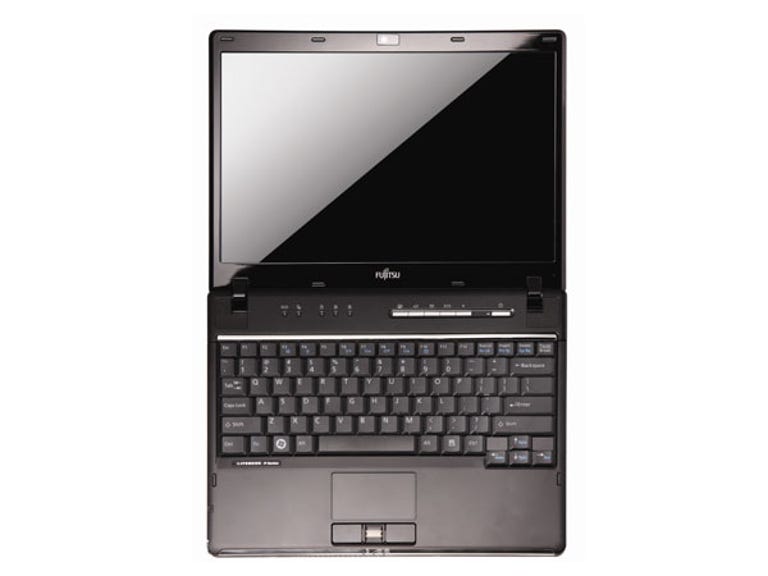 Why You Can Trust CNET
Why You Can Trust CNET Fujitsu LifeBook P8110 review: Fujitsu LifeBook P8110
Fujitsu's sturdy and attractive LifeBook has good battery life and should appeal to business types.
The Good
The Bad
The Bottom Line
Design
Fujitsu's not a company that pitches particularly at the direct consumer market, and as a result many of its LifeBook lines have a rather staid, corporate look. That's definitely the case with the P8110, a black and silver 12.1-inch notebook that measures in at 282x215x29mm and 1.38kg. Tastes vary, but we rather like the elegantly understated design over some of the flashier notebooks on the market today.
A 12.1-inch screen invariably means that there's not a lot of space to dedicate to the keyboard, but in most respects Fujitsu has done well with the spacing, with the notable exception of the space bar itself, which feels a little stunted. Above the keyboard you'll find five programmable buttons that by default offer support, browser, email, power-saving modes and a user-selectable application option.
Features
Screens that are 12.1-inch and smaller are typically the domain of netbooks these days, but the P8110 doesn't play in that space, either from a price or processor viewpoint. The entry-level P8110 starts at AU$1899, much more than any netbook. The processor is a choice of Intel Core 2 Duo SU7300 1.30GHz or Core 2 Duo SU9600 1.60GHz. Our review sample had the speedier SU9600 part, but they're both ultra-low voltage parts, which should have a positive impact on battery life. Standard memory is 2GB, up to a maximum of 4GB, with either a 320GB or 500GB hard drive installed. The cheaper P8110 uses an Atheros XSPAN 802.11b/g/n chip for Wi-Fi, while the costlier model uses Intel's Wi-Fi Link 5300AGN. Ethernet support encompasses gigabit, and Bluetooth 2.1 is supported. Both models use Intel's Graphics Media Accelerator 4500MHD chip for pixel pushing duties. The operating system supplied is Windows 7 Professional edition, although it's only the 32-bit version.
Connectivity options include HDMI and VGA for external displays, three USB 2.0 ports, RJ45 Ethernet, audio in and out, and an SD card reader/ExpressCard 54 slot, which sits directly underneath the right side-mounted dual-layer DVD Super Multi Writer.
Performance
There's one reason and one reason alone that vendors put in a ULV processor, and it's not to save themselves big bucks. It's to extend battery life. The P8110 comes with a six-cell 5800mAh battery that Fujitsu rates for up to eight hours of battery life. We ran the P8110 through our regular battery test, which involves disabling all battery-saving measures, pumping the screen brightness up to 100 per cent and playing back full-screen DVD video until the battery exhausts itself. It's a tough test designed to give a "worst-case" scenario for battery life, as in almost any real-world situation you could eke out more battery life than our figure. The P8110 lasted three and a half hours, which is pretty good for a system with this much grunt. Yes, you could do better with a netbook with less power, but given the balance between features available at higher processor levels and expected battery life, the P8110 acquitted itself well.
The LifeBook P8110 still sits as a business machine, so there's more of a focus on number crunching than straight-up graphics prowess. Its PCMark05 score of 3051 and 3DMark06 score of 550 reflects this entirely. As a smaller, eminently portable machine for somebody who wanted a bit more grunt than you might get out of a netbook, it should suit nicely, although the starting asking price does make it a pricey option compared to some of the entry-level 12-inch notebooks on the market.


